Bringing Queen Alexandra’s Sandwich Home
It was an unlikely road that brought Alexandra of Denmark to the throne of England–she’d grown up as the daughter of a Prince of Schleswig-Holstein-Sonderburg-Glücksburg but a relatively obscure one living on an Army pension. However, 9 years earlier her father had been chosen as heir to the childless Frederick VII of Denmark, and the family’s fortunes had taken an upward turn. At the time, Victorian England was more closely aligned with Germany, who engaged in a series of hostilities with Denmark over the “Schleswig-Hostein Question.” Yet there was enough of a cooling of those hostilities during the period between the First and Second Schleswig Wars, and a sufficient dearth of suitable German prospects, that Alexandra was chosen by Queen Victoria and her consort Prince Albert to wed their son. Regardless of how she got there, on March 10th, 1863, at the age of 18, Alexandra of Denmark married Edward, Prince of Wales (and holder of a half-dozen other titles), the heir to the throne of England. Generous, musically gifted, and known for lavish joyous afternoon teas, Alexandra appears to have been beloved in her adopted England, and thirty-eight years of bearing royal babies (and ignoring princely trysts) later, she became their Queen.
So what in heck does this history lesson have to do with sandwiches? I’m getting there.
In October of 1997, the fantastic British cooking show Two Fat Ladies aired an episode called Afternoon Tea, in which they made an elaborate snack for the boys from a country Cricket club, including a savory anchovy-and-Parmesan pastry, two very fancy desserts, and an odd tea sandwich they said was a favorite of Queen Alexandra. Recipe blogs featuring this sandwich abound on the internet, yet they all either directly reference this episode or follow the show’s recipe to a degree of precision that makes the recipe’s lineage obvious.
I’ve had a difficult time finding any references to this particular sandwich prior to the Two Fat Ladies making it in 1997. And yet, since my research is done entirely and lazily on the Internet (which may contain a vast swath of human knowledge but does not have a special place in its heart for documenting Edwardian nibbles) it’s possible that the corroboration I’m attempting would have to be done offline. Yet early 20th Century cookbooks were heavy on roasting a hunk of beef and turning the drippings into pudding but light on slapping butter and ham on a piece of bread, cutting the crusts off and serving it on a silver dish. Accounts by contemporary sources of afternoon tea with the Queen can be found online, but describing the sandwiches seems not to have been the done thing.
It’s possible, likely even, that if I were in fact a Brit, I’d simply know about Queen Alexandra’s sandwich, and have grown up looking forward to such a royal treat. But I’m not, and I don’t, and I didn’t, and I’ll just have to take Clarissa and Jennifer’s word like the rest of you.
Clarissa, the randier fat lady, started the sandwich by making a simple chicken salad of poached chicken with mayo, salt, pepper, and Tabasco, that notorious Edwardian ingredient, which also seems to make it into most of the other recipes you’ll find online. I am not much of a health food guy but if I’m poaching the chicken anyway, I’ll start with some skinless boneless chicken breasts so I’m not ruining the good stuff. Still, I poached mine with some onion, garlic, bay leaf, and black pepper to keep it from being too boring.
- poached chicken
- poaching chicken with aromatics
Clarissa doesn’t describe how the tongue was cooked–it just magically appears in the larder fully formed. Beef tongue is a weird-looking ingredient, a big log of meat the size of my forearm tapering off to a tongue-tip and prickly with a tastebud-studded skin. I picked up two of them, curing both in a brine for 12 days before braising one and steaming, peeling, then smoking the other, resulting in essentially corned tongue and tongue pastrami. The smoked tongue is delicious but maybe a bit too aggressive for this sandwich, so I’ll stick with the braised tongue, which has a milder flavor but a silkier texture.
- Corned tongue, braised
- Corned tongue, braised
- Corned tongue, smoked
- Corned tongue, smoked
In addition to the tongue, and chicken salad, the sandwich as featured on the show used cress, a common enough ingredient in English tea sandwiches. Cress is a pungent microgreen, with a flavor something like radishes and something like mustard but not really like either one.
The fat ladies construction of this sandwich started with thin-sliced brown bread, spread with a compound butter into which dijon mustard and lemon juice had been mixed. I could repeat the recipe for you here but since you can find it literally anywhere else on the internet I’ll skip it. I went heavier on the mustard than they did anyway, and used squishy white bread, which seemed more like what you’d use for a sandwich when you’ll be cutting the crusts off.
- Compound butter with mustard and lemon
- Simple white bread
In Clarissa’s version, the chicken salad is spread atop the mustard butter, with the cress arranged atop the chicken. The tongue is arranged in a single layer, possibly with a little overlap between slices, on the other slice of bread.
Then the two halves are brought together, the crusts are cut off, and the sandwich is cut into small triangles and arranged on a plate to be served.
It’s just me, Mindy, and our youngest at home these days, with the two older boys away at college. Mindy liked the chicken salad but was freaked out by the tongue, and I suppose I can’t blame her. It’s a different texture than the typical sandwich meat. Our boy Ian dug right in though and helped me finish this plate of sandwiches. The combination of the strong cured flavor of the tongue with the finely minced texture of the chicken salad and the slight hint of mustard from both the cress and the compound butter hinted at the deviled ham sandwiches of my youth but defied a closer comparison.
I made a second batch at work the next day and shared a few wedges with coworkers. They were appreciative and complimentary but I found myself repeating the story of how it came to be known as a Queen’s sandwich often enough to start questioning it. It’s elegant enough in presentation, to be sure.
But is it really a queen’s sandwich?
It could be a Dane’s sandwich, to be sure. The one time I’ve used cress previously for the site was in creating the Danish Smørrebrød called Dyrlægens natmad. Smørrebrød are Danish open-faced sandwiches built on dense seeded rye bread called Rugbrød. (Yes, that just means “rye bread”) Dyrlægens natmad is a type of Smørrebrød featuring pate, salt beef, aspic, onion, and cress.
Additionally, Danish chicken salad, or Hønsesalat (doesn’t that just mean chicken salad? YES. Fine), is a common Smørrebrød ingredient. The Danish version of chicken salad uses a combination of mayonnaise, sour cream or yogurt, and mustard for the dressing, and often adds asparagus or mushrooms
It also could be a poor person’s sandwich. Tongue, ears, snouts, and other forms of offal or less desirable cuts of meat have commonly been considered food of the lower classes in cultures all over the world. Pickled or corned beef tongue has graced many a poor family’s table, not to mention being yet another well-known ingredient in Danish Smørrebrød.
So what would a Danish version of this sandwich look like? Well it would start with the aforementioned Rugbrød, not always easy to obtain in Chicago, but similar to the types of dense, rectangular, thinly slices loaves of German rye or Pumpernickel bread you’ll find in the international section of some grocery stores, but possibly cut into smaller sections.
- German rye in foreground, pumpernickel in the rear
- Rye and pumpernickel cut into individual servings
Smørrebrød simply means “buttered bread,” much the same as the German open-faced sandwiches called Butterbrot, so the next step would be to butter the bread.
From here there are a couple different ways things could go. There’s a common Smørrebrød where Hønsesalat is spread directly on the buttered bread and topped with a piece of bacon. However, for mostly aesthetic reasons, I’m going to add the tongue first.
Buttered bread and tongue would make a fine Smørrebrød on their own. However, we’re going to add a mustardy Hønsesalat and a few cress leaves on top to approximate the Queen Alexandra sandwich.
This was the right bread for the sandwich, especially the sour, dense, moist Pumpernickel, but I imagine that an actual Rugbrød would be even better. The combination of flavors was the same but somehow it worked better in this configuration than in the English tea sandwich format.
The sandwich made me rethink my questioning of the origin of the Queen Alexandra sandwich. Doesn’t this make sense as a Danish Smørrebrød? Wouldn’t it be thoughtful of a royal staff to design a sandwich for their beloved Queen that used ingredients familiar and comfortable to her, but put them together in a fashion that conformed to local customs? And if they were to do that, wouldn’t it look much like the sandwich made by the Two Fat Ladies?
Of course, the Two Fat Ladies would know this too, and the sandwich could just as easily have been engineered to these specifications after the fact.
So I ask you, any readers out there in England, educate this ignorant American. Was the Queen Alexandra sandwich a thing before Clarissa and Jennifer made it one? I suppose it doesn’t matter. History records that Queen Alexandra loved afternoon tea, whatever sandwiches were being served with it.

I like sandwiches.
I like a lot of other things too but sandwiches are pretty great



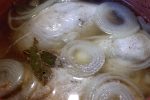







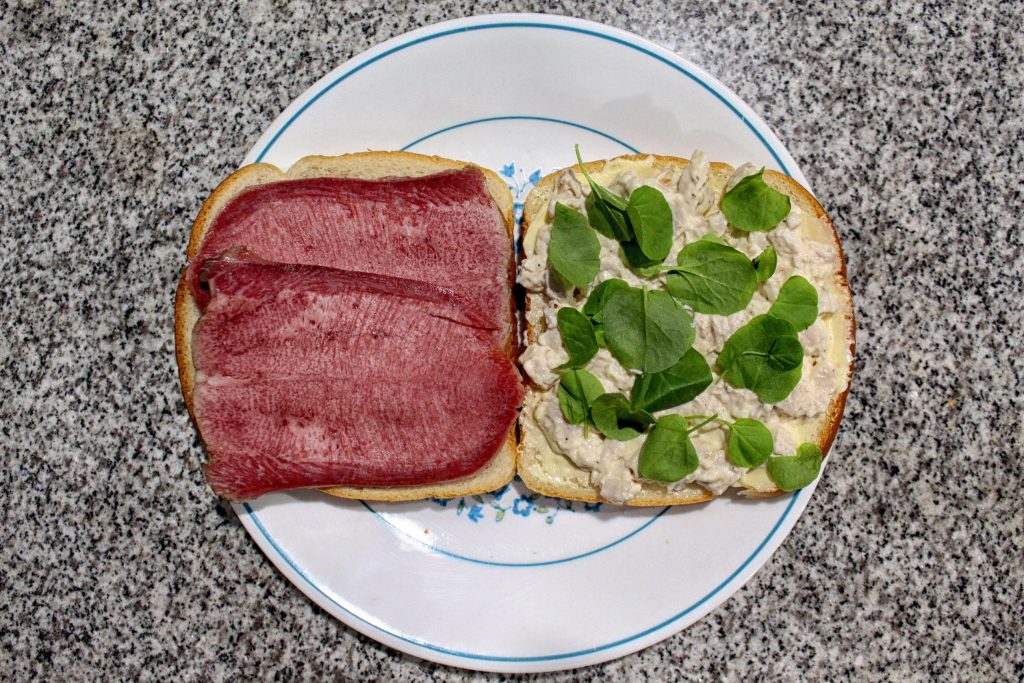
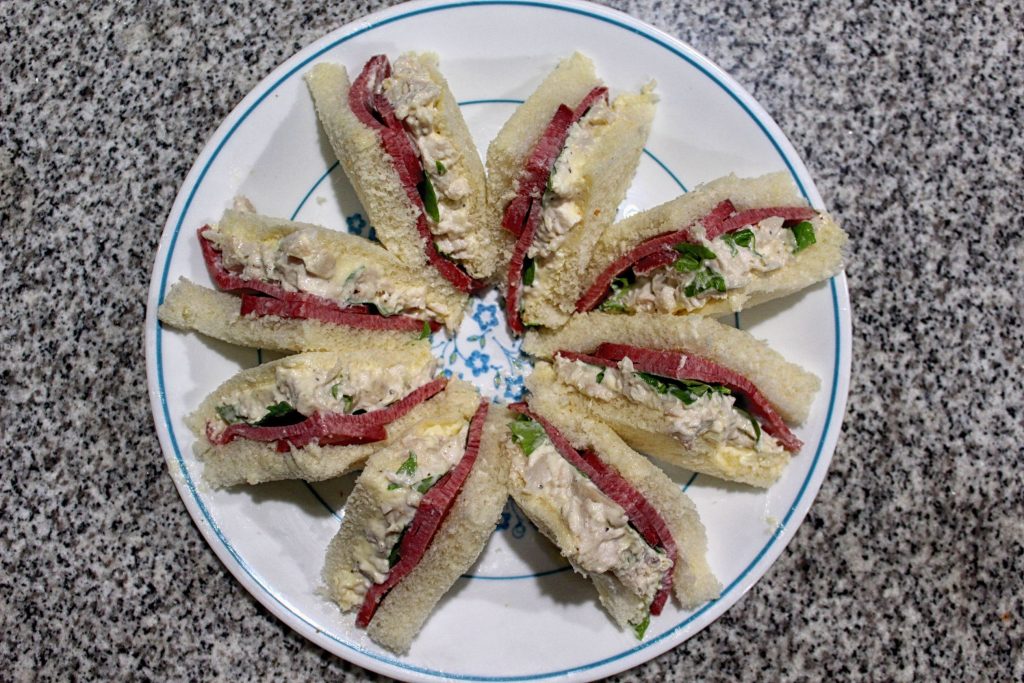
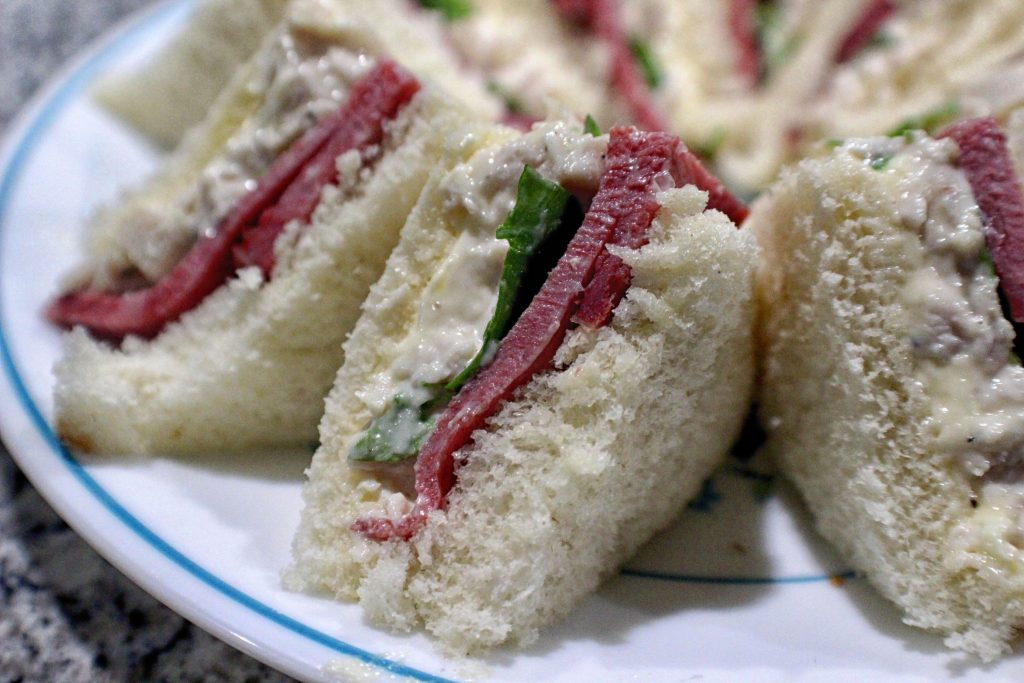
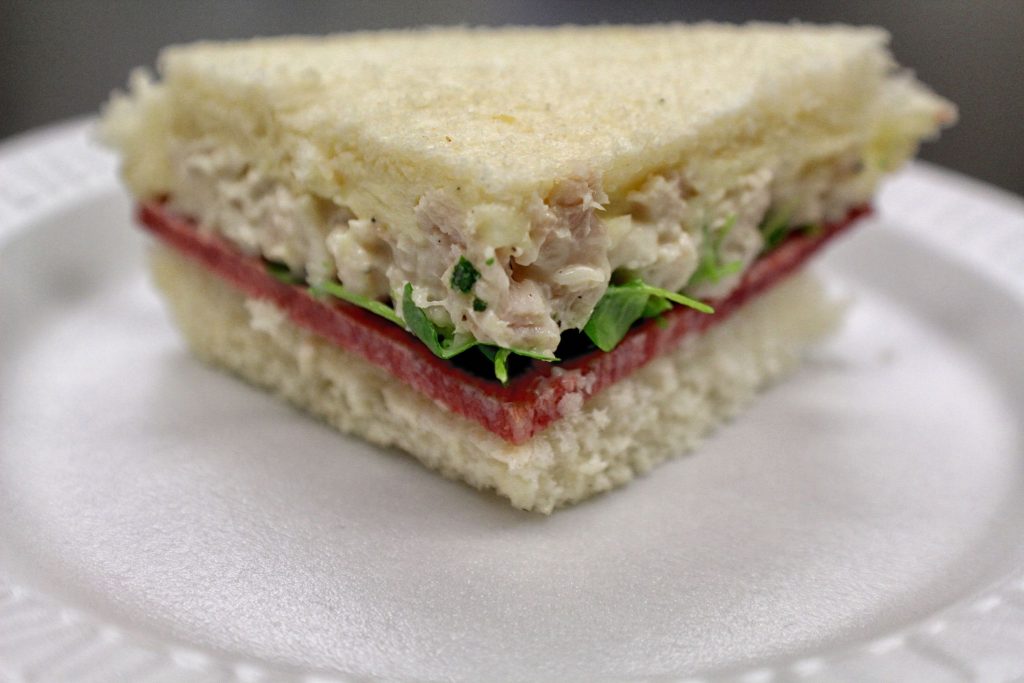
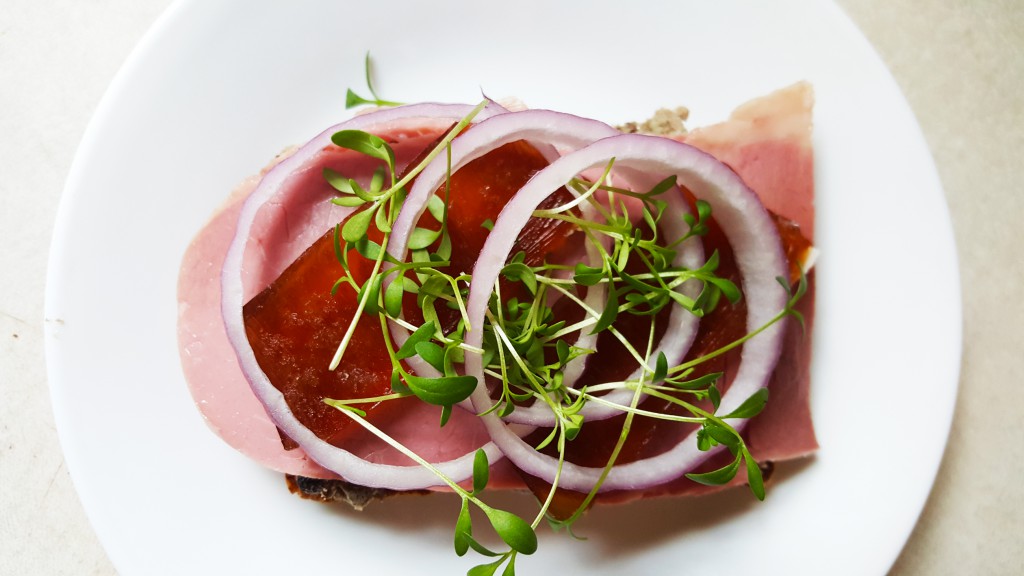
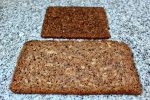
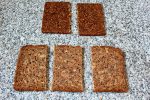



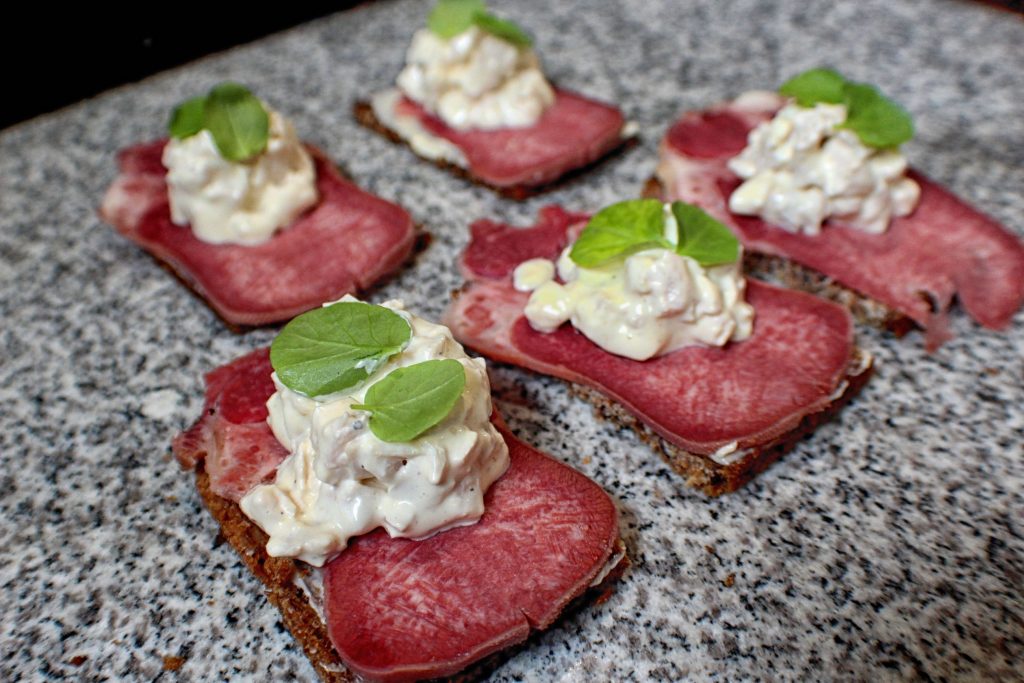


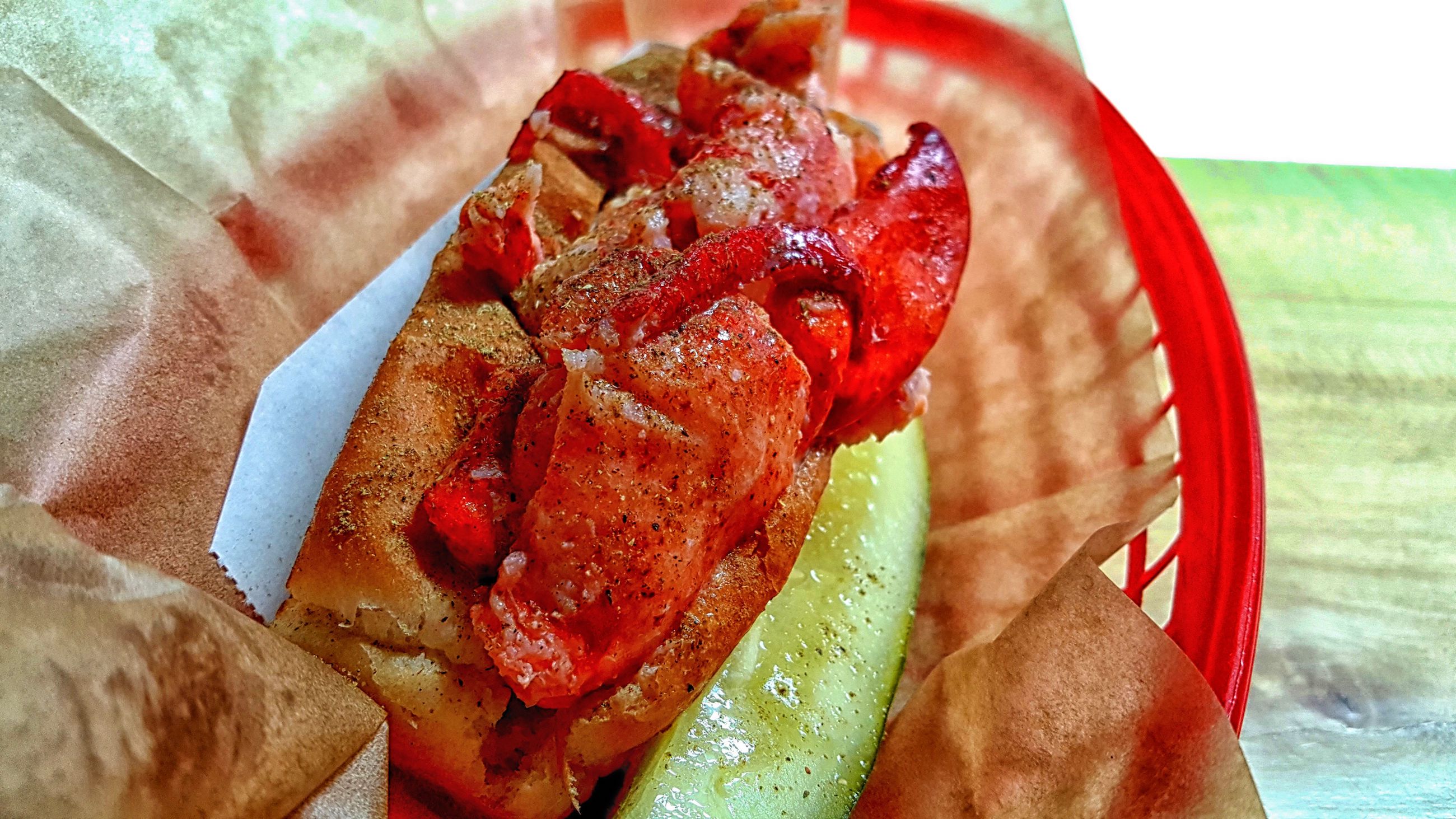






great post- I love this blog and your attention to food history on this article.
Nice post! Two Fat Ladies were the best.
I just found this post while looking for something else, and as a Dane, I must say the Danish version would fit excellently into a “smørrebrødsliste” — the very long list of smørrebrød you are offered as a menu in a restaurant. You cross off your choices on the list with a little pencil the restaurants provide. There are classics, like the Dyrlægens Natmad you refer to, but it is absolutely possible to create new smørrebrød. Danes are very fanatical about the order of smørrebrød, but not so much about the canon. I don’t know much about Queen Alexandra, but maybe she was a bit too old for smørrebrød, which didn’t become a high-class thing before the end of the nineteenth century.